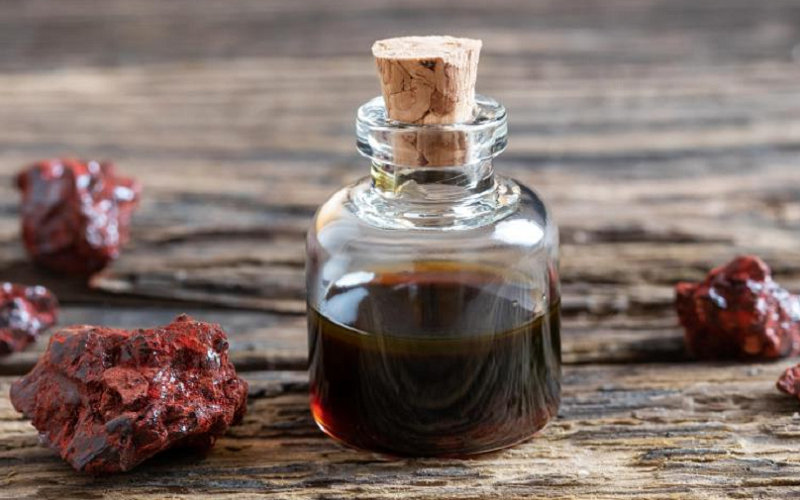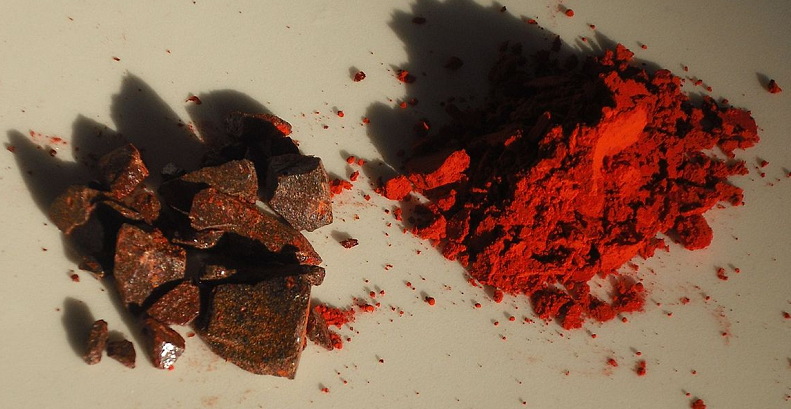
Dragon’s Blood is a remarkable tree resin that has been a part of traditional medicine for centuries. Dragon’s Blood, despite its dramatic name, is a potent skincare ingredient with a host of benefits that can transform your skincare routine and, by extension, your skin. Here we demystify Dragon’s Blood, exploring its origin, key components, and the science behind its effectiveness in skincare.
Contents
Introduction to Dragon’s Blood in Skincare
Dragon’s Blood is a bright red resin that is derived from a variety of different plant species. The most common source is the Croton lechleri tree, also known as the “Dragon’s Blood tree,” which is native to the tropical regions of South America. The resin gets its name from its vibrant red color, which is reminiscent of the mythical creature’s fiery breath. This resin has been used for centuries in traditional medicine for its healing properties, and it’s now making its way into the world of modern skincare.
The use of Dragon’s Blood in skincare is not a new phenomenon. Indigenous communities in South America have long recognized its healing properties, using it to treat a variety of skin conditions and wounds. It was also used in ancient Rome, Greece, and the Middle East for its medicinal properties. Today, the skincare industry is rediscovering this powerful ingredient and incorporating it into a range of products, from serums and creams to masks.

Understanding Dragon’s Blood
Before we delve into the benefits of Dragon’s Blood in skincare, it’s important to understand what it is, where it comes from, and what makes it such a potent ingredient.
What is Dragon’s Blood?
Dragon’s Blood is a natural tree resin, not the mythical substance its name might suggest. It’s a bright red sap that is derived from a variety of plant species, the most common being the Croton lechleri tree, native to the Amazon Rainforest. When the bark of this tree is cut or damaged, it secretes a deep red resin, hence the name Dragon’s Blood. This resin is rich in protective antioxidant phenols and anti-inflammatory compounds, making it a valuable ingredient in skincare [1].
Origin and Extraction of Dragon’s Blood
The Croton lechleri tree, also known as the “Dragon’s Blood tree,” is native to the tropical regions of South America, particularly the Amazon Rainforest. The extraction process is quite simple and sustainable. When the bark of the tree is cut, it secretes the Dragon’s Blood resin. This resin is then collected, dried, and processed into a powder that can be used in various skincare formulations. It’s worth noting that the extraction process does not harm the tree, and it continues to produce resin throughout its lifetime.
Key Components of Dragon’s Blood
Dragon’s Blood is packed with beneficial compounds that contribute to its effectiveness in skincare. These include:
- Taspine: A compound known for its healing properties. Taspine has been shown to stimulate the early phase of wound healing, making it beneficial for skin repair and regeneration.
- Proanthocyanidins: These are potent antioxidants that protect the skin from oxidative damage caused by environmental stressors like UV radiation and pollution.
- Phenols: These compounds have strong antiviral, antibacterial, and antifungal properties, making Dragon’s Blood an effective ingredient for combating skin infections and inflammation.

The Science Behind Dragon’s Blood in Skincare
Now that we’ve explored what Dragon’s Blood is and its key components, let’s explore the science behind its effectiveness in skincare.
Antioxidant Properties
One of the key benefits of Dragon’s Blood is its potent antioxidant properties. The proanthocyanidins found in Dragon’s Blood are powerful antioxidants that help protect the skin from oxidative stress caused by environmental factors such as UV radiation and pollution. Oxidative stress can lead to premature skin aging, including wrinkles, fine lines, and hyperpigmentation. By neutralizing harmful free radicals, the antioxidants in Dragon’s Blood help to maintain the skin’s health and youthful appearance [2].
Anti-Inflammatory and Anti-Bacterial Benefits
Dragon’s Blood also possesses strong anti-inflammatory and antibacterial properties, thanks to the presence of phenols. These compounds can help reduce inflammation and redness, making Dragon’s Blood an effective ingredient for treating skin conditions like acne, rosacea, and eczema. Additionally, the antibacterial properties of Dragon’s Blood can help prevent and treat skin infections, further promoting skin health [3].
Collagen Production Stimulation
Collagen is a vital protein that provides structure and elasticity to our skin. As we age, our bodies produce less collagen, leading to sagging skin and the formation of wrinkles. Dragon’s Blood has been shown to stimulate collagen production, helping to maintain the skin’s firmness and elasticity. This makes it a valuable ingredient in anti-aging skincare products [4].
Wound Healing and Skin Regeneration
The taspine compound in Dragon’s Blood is known for its healing properties. It has been shown to stimulate the early phase of wound healing, making Dragon’s Blood beneficial for skin repair and regeneration. This makes it an effective treatment for cuts, abrasions, and even post-procedure care, helping the skin recover and regenerate more quickly.

Dragon’s Blood in Skincare Products
With a clear understanding of the science behind Dragon’s Blood and its benefits for skin health, let’s now explore how this potent ingredient is used in skincare products.
Types of Products Containing Dragon’s Blood
Dragon’s Blood is a versatile ingredient that can be found in a variety of skincare products [5]. Here are some of the most common:
- Serums: Dragon’s Blood serums are highly concentrated and penetrate deeply into the skin, delivering the benefits of this powerful ingredient directly to your skin cells. These serums can help to protect, heal, and rejuvenate the skin.
- Creams: Dragon’s Blood creams are often used for their anti-aging benefits. They can help to stimulate collagen production, reduce wrinkles and fine lines, and improve skin elasticity.
- Masks: Dragon’s Blood masks provide an intensive treatment, offering deep hydration and healing benefits. They’re ideal for calming inflamed skin, promoting healing, and providing a boost of antioxidants.
How to Choose High-Quality Dragon’s Blood Products
When choosing Dragon’s Blood skincare products, it’s important to look for high-quality options. Here are a few tips:
- Check the Ingredient List: Dragon’s Blood should be listed as ‘Croton Lechleri Resin Extract’ in the ingredient list. The higher it is on the list, the higher the concentration.
- Avoid Unnecessary Additives: Choose products that are free from unnecessary additives like artificial fragrances, colors, and harsh preservatives, which can irritate the skin.
- Look for Reviews and Clinical Studies: High-quality products will often have positive reviews and may be backed by clinical studies.
How to Incorporate Dragon’s Blood into Your Skincare Routine
Incorporating Dragon’s Blood into your skincare routine is relatively straightforward. Here’s a simple guide:
- Cleanse: Always start with a clean face. Use your regular cleanser to remove dirt and makeup.
- Apply Dragon’s Blood Product: If you’re using a serum, apply it after cleansing when your skin is still slightly damp. If you’re using a cream, apply it after your serum. If you’re using a mask, follow the instructions on the packaging.
- Follow with Moisturizer: After applying your Dragon’s Blood product, follow with a moisturizer to lock in the benefits.
References
[1] A beginner’s guide to dragon’s blood: 7 beauty products you need to put on your face right now
[2] Dragon’s Blood: antioxidant properties for nutraceuticals and pharmaceuticals
[3] Dragon’s Blood: Great for Skin
[4] Dragon’s Blood Might Be the Secret to Amazing Skin—Here’s Why
[5] Efficacy of Dragon’s blood cream on wound healing
